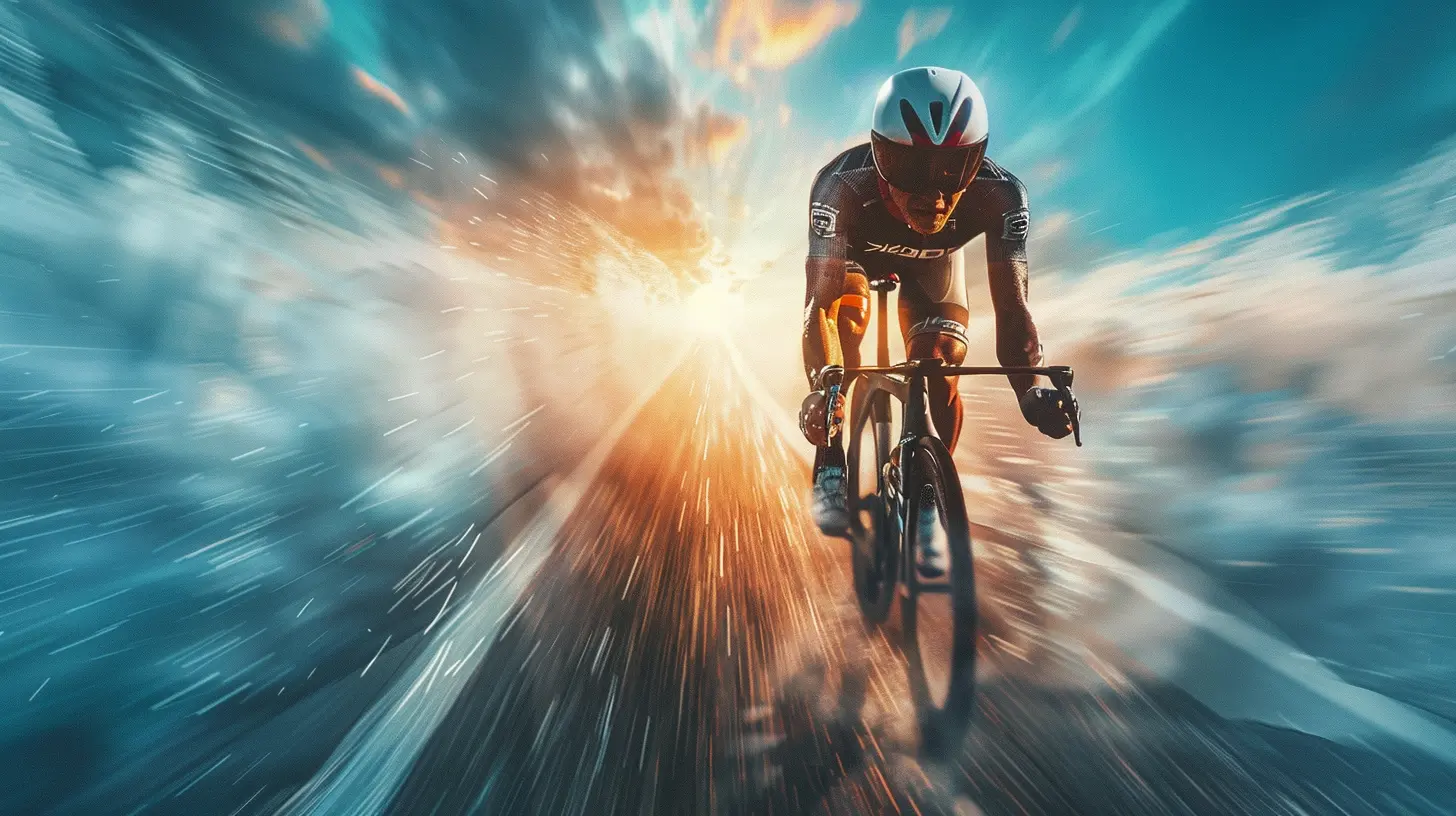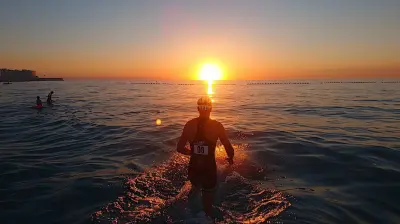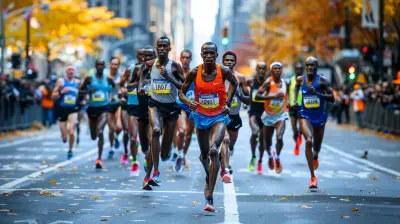The Role of Technology in Triathlon Training
16 April 2025
Triathlon is one of the most demanding endurance sports, requiring athletes to master swimming, cycling, and running. To excel, triathletes need rigorous training, precise monitoring, and strategic improvements. Fortunately, technology has become a game-changer in triathlon training, helping athletes optimize their performance, track progress, and prevent injuries.
From smartwatches that monitor heart rate to virtual simulations of racecourses, cutting-edge technology is transforming how triathletes prepare and compete. But how exactly does technology impact triathlon training? Let’s dive in.

Wearable Technology: Your Personal Coach
Gone are the days when training was based purely on gut instinct. Thanks to wearable technology, triathletes now have real-time data at their fingertips.Smartwatches and Fitness Trackers
Devices like Garmin, Suunto, and Polar offer triathletes the ability to track:- Heart rate
- VO2 max
- Cadence
- Swimming stroke efficiency
- Running power
By analyzing these metrics, athletes can adjust their training load to avoid overtraining or undertraining. Plus, GPS-enabled watches help track distance, pace, and even altitude changes.
Heart Rate Monitors: Training Smarter, Not Harder
Heart rate-based training helps triathletes stay within optimal training zones, ensuring they’re not pushing too hard or too little. Chest strap monitors and optical wrist sensors provide accurate data on cardiovascular efficiency, helping athletes maximize endurance.
Smart Training Apps: Your Virtual Training Partner
Training apps have made it easier than ever to structure workouts and monitor progress.Zwift and TrainerRoad for Cyclists
Indoor training has exploded in popularity, and for a good reason. Platforms like Zwift and TrainerRoad bring indoor cycling to life by simulating real-world terrains and providing structured interval workouts. This eliminates the guesswork and keeps athletes engaged with interactive training programs.TrainingPeaks and Strava for Performance Tracking
Want to track every second of your training? TrainingPeaks helps triathletes analyze detailed performance data, identify weaknesses, and plan precise workouts. Strava, on the other hand, turns training into a social experience, offering leaderboards, challenges, and the ability to compare performance with fellow athletes.
Power Meters: Precision Training for Cyclists
Training with power meters has revolutionized how triathletes approach cycling. Unlike heart rate, which can be influenced by factors like fatigue or stress, power output gives direct insights into effort.- Instant feedback on wattage helps triathletes pace themselves in races.
- Helps structure training zones for efficiency and endurance.
- Detects fatigue trends so athletes can avoid overtraining.
Power meters take guesswork out of training, allowing cyclists to maintain optimal intensity without burning out. 
Swim Technology: Perfecting Technique
Swimming is often the most challenging leg of a triathlon. Fortunately, technology is helping triathletes refine their technique like never before.Swim Watches with Stroke Analysis
Devices like the Garmin Swim 2 or FORM Swim Goggles provide real-time insights on:- Stroke rate
- Stroke efficiency
- Distance per stroke
- Swim pacing
These insights help athletes refine their technique and improve speed without wasting energy.
Underwater Cameras and AI Analysis
Top coaches and triathletes use underwater cameras to break down swim stroke efficiency. AI-powered software can analyze video footage, identifying flaws in technique and suggesting corrections.Running Tech: Smarter Training, Fewer Injuries
Running is the final stage of a triathlon, and ensuring efficiency here is critical.Running Power Meters
Just like cycling power meters, running power meters (like the Stryd sensor) measure power output, stride length, and ground contact time. This helps athletes:- Improve form
- Prevent injuries
- Optimize race-day pacing
Gait Analysis and Smart Insoles
Gait analysis technology helps triathletes understand how they run. Smart insoles like Nurvv Run analyze footstrike patterns, pronation, and impact force, reducing injury risk and improving efficiency.Recovery and Injury Prevention Tech
Training hard is essential, but recovery is just as important. Modern technology helps triathletes stay injury-free.Compression Gear and Recovery Boots
NormaTec recovery boots use air compression to speed up recovery by improving circulation and flushing out lactic acid. Many elite triathletes swear by them.Wearable Muscle Stimulators
Devices like PowerDot or Compex use electrical stimulation to relieve muscle soreness and promote faster recovery after intense sessions.Sleep and HRV Monitors
Recovery isn’t just about muscles; sleep and stress levels play a huge role. Sleep trackers and HRV (heart rate variability) monitors help athletes ensure they’re getting enough rest and stress management between workouts.Smart Nutrition: Fueling for Success
Technology isn't just about tracking workouts—it also helps triathletes optimize their nutrition.Sweat Testing for Hydration Strategies
Some companies provide sweat testing to analyze individual hydration needs. By understanding an athlete's sodium loss, triathletes can adjust hydration plans to maximize performance on race day.Wearable Glucose Monitors
Monitoring glucose levels in real time helps triathletes fuel efficiently. Continuous glucose monitors (CGMs) like Supersapiens provide insights into blood sugar levels, helping athletes avoid energy crashes.Virtual Racing and AI Coaching
With the rise of AI, triathlon training has taken a futuristic leap forward.AI-Powered Training Plans
AI coaching platforms like TriDot analyze past training data, fitness levels, and goals to create personalized plans that adapt in real time. This takes the guesswork out of training and keeps athletes on track.Virtual Triathlon Events
With races being canceled or postponed, virtual triathlons have gained popularity. Platforms allow athletes to complete swim, bike, and run segments remotely while comparing results with competitors worldwide.The Future of Triathlon Training Technology
Technology in triathlon training is constantly evolving. In the near future, we may see:- More advanced AI-driven coaching systems.
- Improved biometric tracking, including real-time lactate measurements.
- Augmented reality (AR) smart glasses for real-time performance feedback.
One thing is clear—triathlon training is becoming more data-driven, efficient, and personalized than ever before.
Final Thoughts
Technology has transformed the way triathletes train and compete. From real-time performance tracking to AI-powered coaching, advancements are making training more precise, effective, and engaging. Whether you’re a beginner or an elite competitor, leveraging these tools can help you train smarter, prevent injuries, and ultimately cross the finish line stronger.So, if you're serious about triathlon, it's time to embrace technology. After all, in a sport where every second counts, why leave anything to chance?
all images in this post were generated using AI tools
Category:
TriathlonAuthor:

Uziel Franco
Discussion
rate this article
7 comments
Arwenia McCallum
Just hoping my smartwatch doesn’t drown during the swim!
April 23, 2025 at 11:47 AM

Uziel Franco
I totally understand your concern! Just make sure to check the water resistance rating of your smartwatch to keep it safe during your swim. Happy training!
Delta Wilkins
Who knew triathletes needed gadgets more than a Swiss Army knife? With smart shoes tracking every step and bikes that talk back, it seems the only thing missing is a robot to hand you a smoothie at the finish line. Cheers to techy triumphs!
April 20, 2025 at 6:32 PM

Uziel Franco
Thanks for the fun comment! Technology has indeed transformed triathlon training, making it more efficient and data-driven. Who knows what the future holds—perhaps that smoothie robot isn’t far off! Cheers!
Summer Mason
Technology has revolutionized triathlon training by providing athletes with data-driven insights through wearables, GPS tracking, and performance analytics. Tools like smart trainers and apps facilitate personalized training plans, enhancing efficiency and recovery. As a result, athletes can optimize their performance and better prepare for competition in this demanding sport.
April 20, 2025 at 12:38 PM

Uziel Franco
Absolutely! Technology empowers triathletes with tailored insights and data, enhancing training efficiency and performance preparation for competitions.
Gwen Ross
Great insights on tech!
April 19, 2025 at 7:06 PM

Uziel Franco
Thank you! I'm glad you found it insightful!
Landon Cain
Who knew that training for a triathlon would involve more gadgets than a superhero’s utility belt? Between swim tracking watches and bike sensors, I half-expect my next water bottle to tweet my hydration levels! Here’s to tech turning sweaty chaos into data-driven victories—let the digital triathlete revolution begin!
April 17, 2025 at 4:26 AM

Uziel Franco
Absolutely! Technology has transformed triathlon training, making it smarter and more efficient. Here’s to leveraging every gadget for peak performance!
Wynter Barnes
Technology has revolutionized triathlon training, enabling athletes to track performance with precision. Wearable devices, apps, and advanced analytics provide insights that enhance endurance, technique, and overall race strategy.
April 16, 2025 at 7:40 PM

Uziel Franco
Thank you for highlighting the transformative impact of technology in triathlon training! Indeed, these tools are essential for optimizing performance and refining strategies.
Sabrina Harper
Great article! It's fascinating how technology enhances triathlon training, from tracking performance to optimizing nutrition. Embracing these tools can truly elevate an athlete's game. Keep sharing insights!
April 16, 2025 at 11:56 AM

Uziel Franco
Thank you! I'm glad you found it fascinating. Technology truly is a game-changer for triathletes. Appreciate your support!
MORE POSTS

How to Choose the Right Paddle for Competitive Table Tennis

The Importance of Recovery in Triathlon Training

Creating a Balanced Fantasy Roster: Stars vs. Depth

The Best Marathon Apps to Track Your Progress

How to Mentally Recover After a Tough Rugby Loss

How to Skateboard Faster Without Losing Control